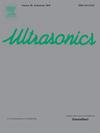Optimal principal component and measurement interval selection for PCA reconstruction-based anomaly detection in uncontrolled structural health monitoring
IF 3.8
2区 物理与天体物理
Q1 ACOUSTICS
引用次数: 0
Abstract
PCA reconstruction-based techniques are widely used in guided wave structural health monitoring to facilitate unsupervised damage detection. The measurement interval of collecting evaluation data significantly influences the correlation among the data points, impacting principal component values and, consequently, the accuracy of damage detection. Despite its importance, there has been limited research on the selection of suitable components and measurement intervals to reduce false alarms. This paper seeks to develop strategies for identifying the optimal number of principal components and measurement intervals for PCA reconstruction-based damage detection methods. Our results indicate that the patterns of change in reconstruction coefficients, based on the number of components used in PCA reconstruction and the measurement interval for collecting evaluation data, are effective indicators for determining the optimal principal components and measurement intervals for damage detection, without using any damage information. The effectiveness of the indicators for determining optimal components and measurement intervals is validated using evaluation sets collected under uncontrolled and dynamic monitoring conditions, with measurement intervals ranging from 86 to 8600 s per measurement.
非受控结构健康监测中基于PCA重构的异常检测的最优主成分和测量区间选择。
基于PCA重构的技术被广泛应用于导波结构健康监测中,以实现无监督损伤检测。采集评价数据的测量间隔对数据点之间的相关性有显著影响,进而影响主成分值,从而影响损伤检测的准确性。尽管它很重要,但在选择合适的组件和测量间隔以减少误报方面的研究有限。本文旨在为基于PCA重建的损伤检测方法确定最佳主成分数和测量间隔的策略。研究结果表明,在不使用任何损伤信息的情况下,基于PCA重建中使用的成分数和收集评价数据的测量区间的重构系数变化规律是确定损伤检测的最佳主成分和测量区间的有效指标。通过在非受控和动态监测条件下收集的评估集,验证了指标在确定最佳组件和测量间隔方面的有效性,每次测量间隔从86到8600s不等。
本文章由计算机程序翻译,如有差异,请以英文原文为准。
求助全文
约1分钟内获得全文
求助全文
来源期刊

Ultrasonics
医学-核医学
CiteScore
7.60
自引率
19.00%
发文量
186
审稿时长
3.9 months
期刊介绍:
Ultrasonics is the only internationally established journal which covers the entire field of ultrasound research and technology and all its many applications. Ultrasonics contains a variety of sections to keep readers fully informed and up-to-date on the whole spectrum of research and development throughout the world. Ultrasonics publishes papers of exceptional quality and of relevance to both academia and industry. Manuscripts in which ultrasonics is a central issue and not simply an incidental tool or minor issue, are welcomed.
As well as top quality original research papers and review articles by world renowned experts, Ultrasonics also regularly features short communications, a calendar of forthcoming events and special issues dedicated to topical subjects.
 求助内容:
求助内容: 应助结果提醒方式:
应助结果提醒方式:


